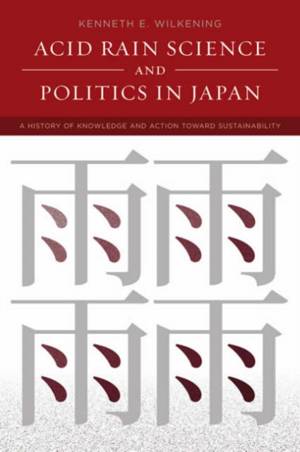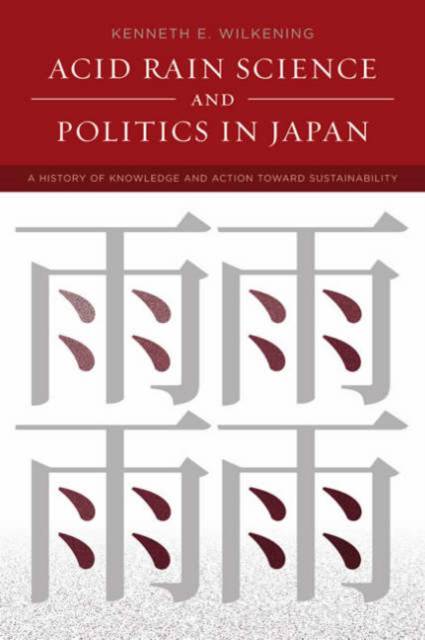
- Retrait gratuit dans votre magasin Club
- 7.000.000 titres dans notre catalogue
- Payer en toute sécurité
- Toujours un magasin près de chez vous
- Retrait gratuit dans votre magasin Club
- 7.000.0000 titres dans notre catalogue
- Payer en toute sécurité
- Toujours un magasin près de chez vous
Acid Rain Science and Politics in Japan
A History of Knowledge and Action Toward Sustainability
Kenneth E WilkeningDescription
Acid Rain Science and Politics in Japan is a pioneering work in environmental and Asian history as well as an in-depth analysis of the influence of science on domestic and international environmental politics. Kenneth Wilkening's study also illuminates the global struggle to create sustainable societies.
The Meiji Restoration of 1868 ended Japan's era of isolation- created self-sufficiency and sustainability. The opening of the country to Western ideas and technology not only brought pollution problems associated with industrialization (including acid rain) but also scientific techniques for understanding and combating them. Wilkening identifies three pollution-related sustainability crises in modern Japanese history: copper mining in the late nineteenth and early twentieth centuries, which spurred Japan's first acid rain research and policy initiatives; horrendous post-World War II domestic industrial pollution, which resulted in a hidden acid rain problem; and the present-day global problem of transboundary pollution, in which Japan is a victim of imported acid rain. He traces the country's scientific and policy responses to these crises through six distinct periods related to acid rain problems and argues that Japan's leadership role in East Asian acid rain science and policy today can be explained in large part by the historical scientific momentum generated by efforts to confront the issue since 1868, reinforced by Japan's cultural affinity with rain (its culture of rain). Wilkening provides an overview of nature, culture, and the acid rain problem in Japan to complement the general set of concepts he develops to analyze the interface of science and politics in environmental policymaking. He concludes with a discussion of lessons from Japan's experience that can be applied to the creation of sustainable societies worldwide.
Spécifications
Parties prenantes
- Auteur(s) :
- Editeur:
Contenu
- Nombre de pages :
- 328
- Langue:
- Anglais
- Collection :
Caractéristiques
- EAN:
- 9780262731669
- Date de parution :
- 21-05-04
- Format:
- Livre broché
- Format numérique:
- Trade paperback (VS)
- Dimensions :
- 152 mm x 231 mm
- Poids :
- 467 g

Les avis
Nous publions uniquement les avis qui respectent les conditions requises. Consultez nos conditions pour les avis.






